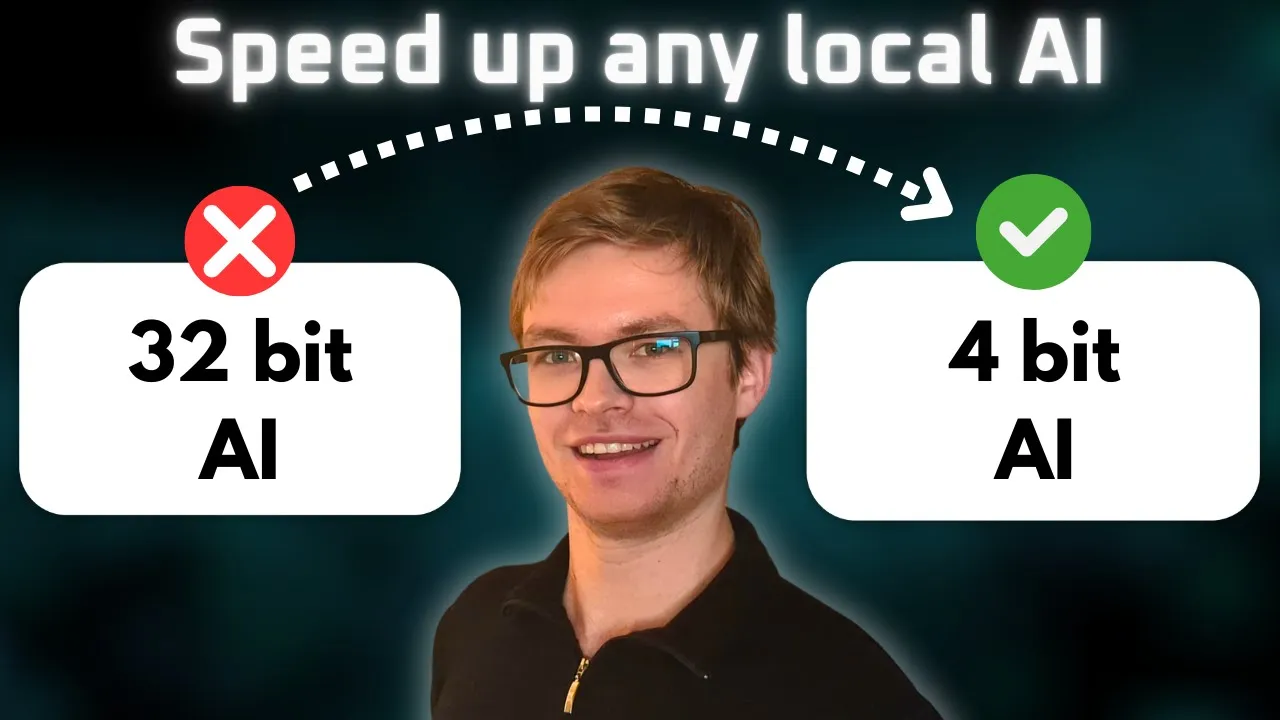Model Quantization The Key to Faster Local AI Performance
Running advanced AI models on your personal computer can feel like asking a sports car to fit in a compact parking space—it’s possible, but not without some creative adjustments. This is where model quantization enters the picture, transforming the landscape of local AI implementations. Understanding these optimization techniques is essential for building an impressive AI engineering portfolio that demonstrates practical deployment skills.
The Resource Challenge of Full-Sized Models
Modern AI models like Mistral 7B store billions of parameters as 32-bit floating-point numbers. Each of these parameters requires precise numerical representation, resulting in models that demand substantial computational resources. A full-sized 7B parameter model can occupy nearly 30GB of space when loaded into memory—far beyond what most consumer GPUs can handle.
This resource intensity creates a significant barrier. Without specialized hardware typically found in data centers, running these sophisticated models locally becomes virtually impossible for most users. The result? Advanced AI capabilities remain locked away from everyday applications and personal projects.
How Quantization Transforms Performance
Quantization addresses this challenge through a remarkably effective principle: reducing numerical precision to gain computational efficiency. Instead of storing each parameter with extreme precision (up to seven decimal places in 32-bit representation), quantization reduces this to simpler formats—16-bit, 8-bit, or even 4-bit numbers.
The results are transformative:
- Dramatic Size Reduction: A 4-bit quantized version of a 7B parameter model shrinks from approximately 30GB to just 4GB—an 87% reduction in size
- Speed Improvements: Quantized models run 2-5 times faster than their full-precision counterparts
- Resource Efficiency: Memory usage can drop by 70% or more, making previously unusable models accessible on consumer hardware
This isn’t merely an incremental improvement—it’s a fundamental shift in what’s possible on personal computers. Models that once required specialized hardware suddenly become accessible on standard consumer machines.
The Surprising Minimal Accuracy Trade-offs
The intuitive concern with quantization is that reducing precision must significantly impact performance. After all, we’re deliberately removing information from the model. However, research consistently shows that the accuracy impact is surprisingly minimal—typically just 1-2% degradation in model performance.
This minimal trade-off can be understood through an analogy: think of converting a high-resolution photo to a slightly lower resolution. While some minute details might be lost, the overall image remains clear and recognizable. Similarly, quantized models maintain their fundamental understanding and capabilities while requiring far fewer computational resources.
Democratizing Access to Advanced AI
Perhaps the most significant impact of quantization is how it democratizes access to cutting-edge AI technology. What was once exclusive to well-resourced tech companies with access to specialized hardware now becomes available to:
- Individual developers working on personal machines
- Small businesses without access to expensive GPU clusters
- Educational institutions with limited computing resources
- Hobbyists exploring AI capabilities
This accessibility shift moves AI from a centralized technology to a distributed one, enabling innovation across a much broader spectrum of users and use cases. For engineers following an AI engineering career path, understanding model optimization techniques becomes crucial for standing out in the field.
Finding Quantized Models
When searching for models to run locally, looking specifically for quantized versions can dramatically improve your experience. These optimized models are often identified by suffixes like “Q4” (4-bit quantization), “Q8” (8-bit quantization), or direct mentions of quantization in their descriptions.
The performance difference isn’t subtle—it’s the distinction between a model that crawls along consuming all available resources and one that runs smoothly while leaving your system responsive for other tasks. This optimization knowledge becomes particularly valuable when implementing AI agent systems that need to run efficiently on various hardware configurations.
The Future of Local AI Performance
As quantization techniques continue to evolve, we can expect even better optimizations that further reduce the gap between compressed and full-precision models. This ongoing development promises to bring increasingly powerful AI capabilities to standard consumer hardware, expanding what’s possible without specialized equipment.
Model quantization represents not just a technical optimization but a fundamental shift in how AI technology can be distributed and utilized. By making advanced models accessible on everyday hardware, quantization helps fulfill the promise of AI as a widely available tool rather than a resource-restricted luxury.
To see exactly how to implement these concepts in practice, watch the full video tutorial on YouTube. I walk through each step in detail and show you the technical aspects not covered in this post. If you’re interested in learning more about AI engineering, join the AI Engineering community where we share insights, resources, and support for your journey. Turn AI from a threat into your biggest career advantage!

